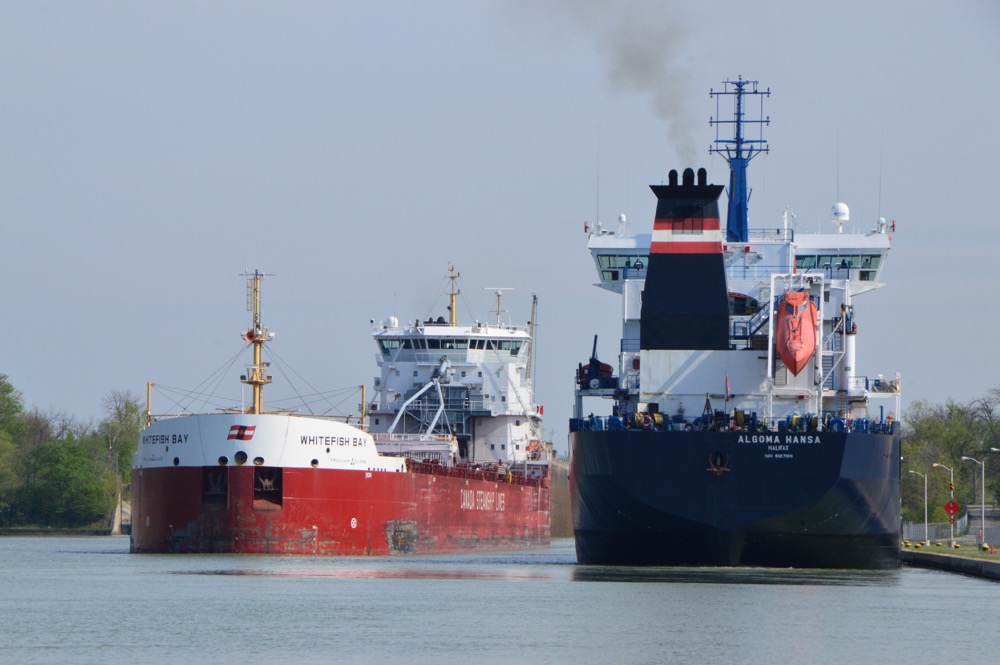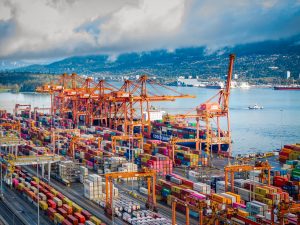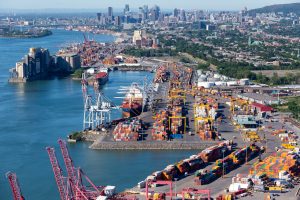While St. Lawrence Seaway cargo volumes decreased during the past two months due to economic shifts related to COVID-19, industry leaders said the binational trade and transportation corridor is ready to play its part in the economic recovery efforts in the coming months.
The latest figures show that cargo transported on the St. Lawrence Seaway from April 1 to May 31 totaled 7.7 million metric tons, a decrease of 10 per cent compared to the same period in 2019.
Canadian grain exports, road salt shipments and project cargo shipments such as wind turbine components have remained strong throughout the last two months. However, cargo volumes of steel-related materials, construction materials, and petroleum declined as automotive plants and work sites closed and people stayed home during COVID-19-related emergency measures.
The marine highway, ship operators and ports have safely operated throughout the pandemic without interruption or delay.
“Our state of the art Hands Free Mooring system, which has eliminated the need for ships’ crews and Seaway personnel to manually tie-up ships at locks, has greatly facilitated safe lock operations and enabled social distancing,” said Terence Bowles President and CEO of The St. Lawrence Seaway Management Corporation. “In addition, an emergency plan that we developed after the SARS outbreak in 2003, and the H1N1 crisis in 2009, enabled us to pivot quickly when COVID-19 began to spread and ensure that we can continue supporting the myriad of shippers that depend upon the Seaway.”
Mr. Bowles added, “The teamwork and cooperation shown by all the marine related stakeholders has been exceptional and, no doubt, is the key to our continued response to the virus. From grain destined for overseas markets, to iron ore, road salt and project cargo, we continue to get the job done, enabling our economy to rebound from the adversity encountered this year.”
One of the first areas of improvement expected in cargo volumes are construction materials such as stone and cement as restrictions continue to be lifted throughout the Great Lakes-St. Lawrence region.
Canadian grain exports via the Seaway also continue to be a star performer totaling 2.1 million metric tons year-to-date, an increase of 3 per cent over 2019.
The Port of Thunder Bay experienced another strong month for grain shipments in May, as more than 1.1 million metric tons of Canadian grain (Prairie wheat and canola) passed through the Port to feed worldwide demand for food staples like pasta and bread. Several factors have led to robust movement of Prairie wheat and canola through the port since the shipping season opened in March. Many countries are stockpiling amidst the pandemic, increasing demand. Global grain supply has also been impacted by drought in Australia and export restrictions in Russia. Australia, Russia, and Canada are among the top exporters of wheat globally.
“Canadian grain supplies are holding strong as there is significant carryover stock from the 2019 crop, which was the second largest on record,” said Tim Heney, Chief Executive Officer at the Port of Thunder Bay.“We anticipate strong grain shipments to continue through the summer.” (photo Paul Beesley)








